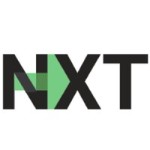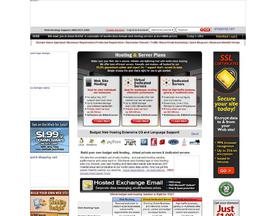Work is changing with more hybrid workplaces and remote work. HR professionals and managers must keep confidential information secure and maintain data integrity.
Remote work introduces specific security risks. Since transitioning to remote work, 54% of remote workers have encountered security incidents. This statistic underscores the vulnerability of remote workers.
Further, compliance with data protection regulations assumes vital importance. The General Data Protection Regulation (GDPR) imposes stringent requirements on organizations that handle personal data. Potential penalties for non-compliance reach up to €20 million or 4% of global annual turnover, whichever is higher. Likewise, the California Consumer Privacy Act (CCPA) levies fines ranging from $2,500 to $7,500 per violation.
This article provides HR professionals and managers with valuable insights and strategies to tackle this challenge. By implementing these recommendations, they can protect their sensitive data with confidence.
Understanding the Security Risks in a Hybrid Workplace with Remote Workers
The transition to a hybrid workplace introduces various security challenges. One prominent concern is the heightened vulnerability to cyberattacks.
A study revealed a staggering 47% increase in cyberattacks for organizations that embraced remote work. This surge in cyber threats underlines the imperative for bolstered security measures.
Remote work can make sensitive data vulnerable to unauthorized access. Weak security in home networks, unprotected personal devices, and public Wi-Fi networks increase the risk of data breaches. 41% of remote workers admit to using personal devices for work purposes. This practice amplifies the potential exposure of sensitive data.
These vulnerabilities underscore the significance of implementing robust security measures to safeguard sensitive information.

Developing Data Protection Policies and Procedures
A solid data protection policy is crucial in a hybrid workplace with remote workers. It shows the organization’s commitment to security, assigns roles, and provides guidelines for handling sensitive data.
Organizations with well-crafted data protection policies experience a 50% reduction in security incidents. This statistic underscores a policy’s immense impact in mitigating security risks.
Here are five essential strategies and considerations:
- Establish a comprehensive Data Protection Policy. It should communicate your commitment to data security and delineate the roles and responsibilities for safeguarding data.
- Develop guidelines that categorize data based on its sensitivity. Establish protocols for accessing, storing, and sharing this information securely. Provide guidelines for managing sensitive data in remote work scenarios.
- Ensure secure communication and encryption practices. Encourage the use of encrypted email services and secure messaging platforms. Implement robust encryption protocols and use virtual private networks (VPNs).
- Review and update your data protection policies. Conduct periodic assessments to ensure alignment with evolving security standards and regulations. Perform internal audits and risk assessments to identify potential vulnerabilities.
- Implement a password manager. Password managers can generate and store unique, strong passwords for different accounts. They reduce the risk of password-related security breaches and enhance overall data protection.

Using Access Controls and Authentication Mechanisms
Access controls limit data access, ensuring only authorized individuals can access specific information. Authentication mechanisms verify users’ identities before granting them access to data.
Implementing adequate access controls is key to enhancing data security in your organization. Let’s explore the six following practices in more detail:
- Leveraging Multi-Factor Authentication (MFA) for Remote Access. MFA provides an additional layer of security and reduces the risk of unauthorized access if passwords are compromised. Consider implementing biometric authentication methods like fingerprint or facial recognition.
- Embracing Role-Based Access Controls (RBAC). Assign access privileges based on employees’ specific job roles and responsibilities. Limit access to sensitive data to those who need it to perform their duties.
- Adopting the Principle of Least Privilege. Grant employees the minimum level of access required to perform their tasks. Restrict administrative privileges to a select few individuals and closely monitor their activities.
- Monitoring and Logging Access Activities. Centralize and analyze access logs using security information and event management (SIEM) tools.
- Conducting Routine Security Assessments and Penetration Testing. Perform scheduled security assessments to identify vulnerabilities in access controls.
- Educating Employees on Best Practices for Access Controls. Encourage the use of strong passwords while discouraging sharing login credentials.
Ensuring Secure Data Storage and Compliance
In hybrid workplaces, it’s crucial to prioritize secure data storage and compliance. It ensures that sensitive information is safe from unauthorized access, use, and disclosure. Compliance with GDPR and CCPA is also essential to avoid legal and financial penalties.
To this end, consider the following strategies:
- Encrypt data at rest and in transit. Employ SSL/TLS protocols to encrypt data during transmission, ensuring secure communication channels.
- Use reliable cloud storage solutions. Look for reputable providers that offer encryption for data at rest and in transit.
- Perform regular data backups and disaster recovery. Establish consistent backup schedules to minimize the risks of data loss.
- Adhere to data protection regulations. Align your data handling practices with regulatory requirements to ensure compliance.
- Develop guidelines for data retention and destruction. Document your data destruction processes and maintain records to demonstrate compliance.
- Monitor and audit data access. Review access logs and audit trails to identify unauthorized or suspicious activities.
- Use secure physical data storage. Restrict access to server rooms and document storage areas.
Cultivating Data Security Awareness: Training and Education Initiatives
To build a culture of data security awareness, educate employees about risks and prevention of cyber threats. It reduces breaches, protects sensitive information, and boosts employee confidence. HR professionals and managers can adopt these strategies:
- Embrace regular data security awareness training. Regular training sessions provide employees with the essential knowledge to prevent data breaches. Cover topics like identifying phishing attempts and fortifying device and network security.
- Create interactive materials to capture employees’ interest. Tailor the content to address remote work security challenges.
- Instil a sense of personal responsibility in employees for data security. Recognize and reward those who exemplify data security practices.
- Develop a centralized repository of knowledge and resources on data security. Ensure easy access through the company intranet or a learning management system.
- Incorporate data security training into new employee onboarding programs. Establish a foundation of policies, procedures, and best practices.
HR professionals and managers are vital in protecting sensitive data in a hybrid workplace with remote workers. They can build trust among employees, clients, and partners by prioritizing data security and following recommended strategies. This practice safeguards the organization’s reputation and ensures compliance with data protection regulations.












